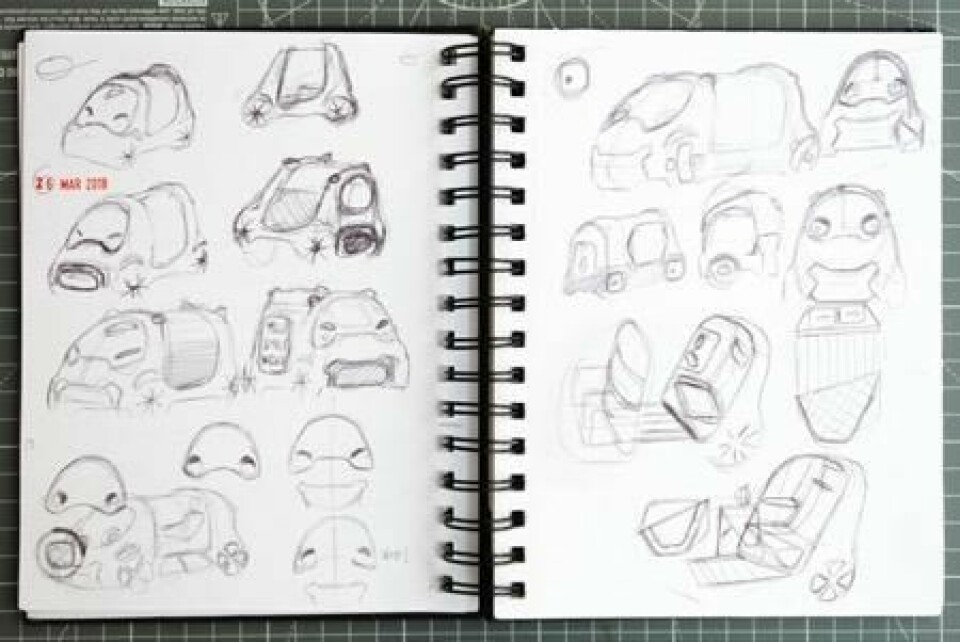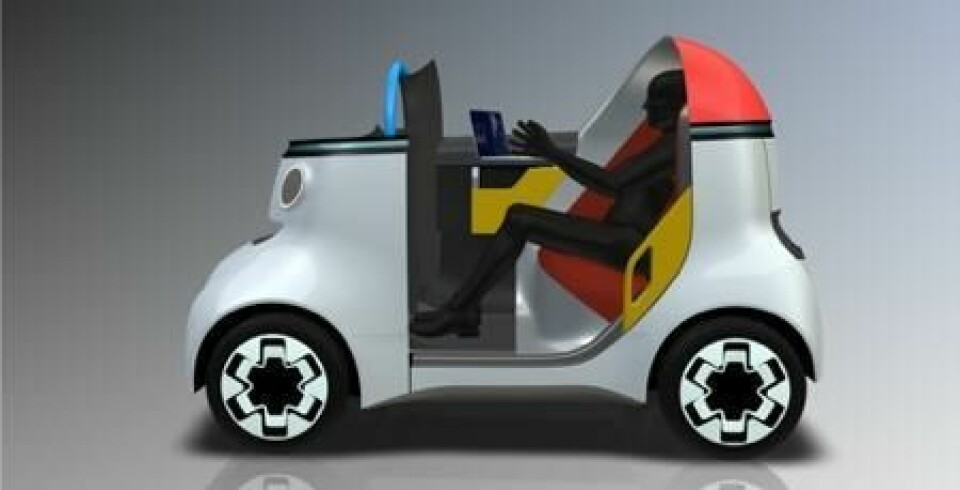
Gordon Murray Design’s Motiv concept
The Gordan Murray Design Motiv concept was recently shown at the MOVE 2020 mobility show in London. We speak to one of the lead designers involved in the project
Recently shown at MOVE 2020, the Gordon Murray Motiv concept was one of the stand-outs of this growing mobility show. Here we talk with José Paris, designer and director of itMoves (ev mobility consultancy) who was closely involved with the project at Gordon Murray Design (GMD).

CDN: How was the Motiv concept born?
JP: The idea evolved from the original vision of autonomous compact urban mobility at aiPod. aiPod was a California tech/mobility start-up that had a team in London, where they won support through the UK’s IDP14 Innovate grant, to develop and accelerate EV use in the capital.
After aiPod went under, the concept was partnered with a consortium of GMD and Delta Motorsport, with the idea to grow the scope of the project and to work with mobility service-providers like Uber + TFL (Transport for London). Michal Vlcek (now lead designer at Auffer design) who was a designer with GM at the time, worked together with us and I developed the concept from there.
What inspired the exterior design?
After 20 years in design you tend to rely on muscle-memory. The London bus by Heatherwick wasn’t exactly an inspiration, but perhaps the colour combinations were an influence. We wanted to create a friendly non-aggressive character. And that’s for other road-users and pedestrians.
Lighting was “friendly-robot” theme, and there’s real opportunities to convey and communicate with pedestrians – which is something I’d really like to push more in the near future.
What about the interior?
In every design school you have these fantastic autonomous taxi concepts, that unfortunately we never see made real, and one of the reasons is that the client isn’t the person using the cab, it’s the operator. And that’s a very specific persona to design for.
It’s a balancing act, and having said that, if you don’t make the vehicle attractive for the end-user, you will find resistance. You can only go so far with lower-prices and more efficiency – we have buses for that! So I was really pushing the line between the shared-use operator-focused interior and all of the requirements that brings, and a feeling of first-class interior space that needs to be comfortable, and attractive – not so much in how it looks but the features, like the big screen and luxurious seating.
Can you describe the use case?
I think you cannot sell these vehicles. What I mean by that is they don’t make sense: it has to be in the setting of a mobility provider, because making a single-seater costs essentially the same as making a 2-seater, and people aren’t used to this single-seater layout. So they ask questions like, ’Why? What is it for?’ As a mobility offering it has a lot of advantages: reduced real estate, better use of parking spaces, low-cost. But you cannot escape that you’re offering “less” for the “same price”, so at this stage the private selling proposition is a non-starter.
What’s the secret around designing around a small package?
At the practical level, it’s to forget about big wheels – as a designer you just have to suck that up. And proportions are always going to be a challenge. It’s very important to realise that we tend to like what we’ve seen before, what we’re familiar with and you really have to force yourself to let that go. Eventually, as with anything new, after you live with it for a while you get used to the different proportions.
On a practical level the tools are the same; surfacing, visual detailing, attention to detailing and precision. And you have to care about the details - If you really care about the design process and are passionate about it, it becomes irrelevant as to what project you are working on.
Did you have to make any sacrifices with interior design due to the size of the vehicle?
Putting two seats into a compact package is always a compromise – think of the original Smart 1500mm wide (Motiv 1310mm), it’s a cramped space. Once you liberate yourself from the requirement of having a second seat, you remove the steering-wheel and the pedals, the interior space is actually nice, it’s very good.
One of the things that I’m fascinated by is how much glazing we need in a small vehicle: you put a lot of glass on a small package and people tend to feel very exposed, it’s not a great solution. So with Motiv, we made the decision to move towards a more closed-canopy feel, for a feeling of security without feeling exposed.

Where do you think vehicle design is headed?
I think the future for mobility designers is positive; there’s going to more opportunities. I see it as a plus – it’s an addition to designing existing proportion, form and layout. Of course design-language still applies, cultural references remain… there’s room for everything, the office on wheels and the more traditional automotive forms.
I was crazy about cars my whole career, but I have to say, things are changing. At the end of the day car companies are companies, and they have to satisfy shareholders, and if people want big diesel SUVs, they’ll sell them. There’s no implication of guilt there, they are companies making money. However, I think some of us will be exploring other directions in mobility and if it’s not us who are actively showing interesting and practical ideas, then you could say that maybe design is not really being used to its fullest potential.
I’ve always been interested in alternative vehicles, and back in the day there was just no room to pursue that in a company, it didn’t exist. To a large extent it’s still like that, you graduate, and you join a company and you work on a facelift, and then another SUV. California is really bucking this trend with some really boundary-pushing ideas.
I’m a recovering car nut, a little piece of my heart is still there, my kids are still crazy about cars… but personally I think I have crossed over to somewhere else. The design student who wants to create traditional cars still has opportunities for the time being, maybe for 15-25 years, but now there’s room to do something else – it’s definitely a plus, it’s an extra add-on for some of us.



